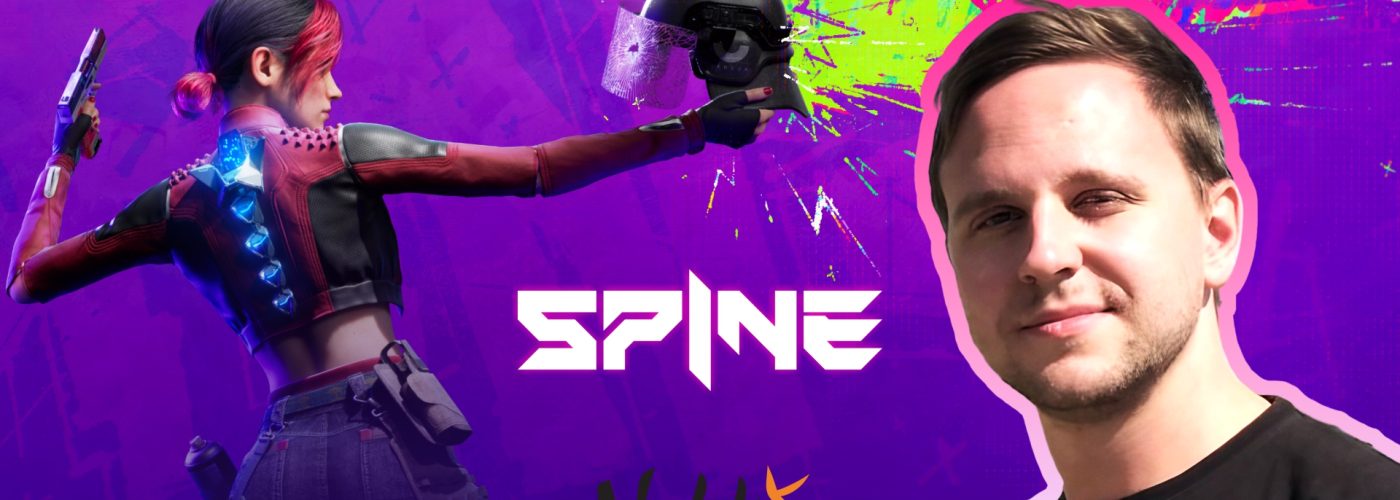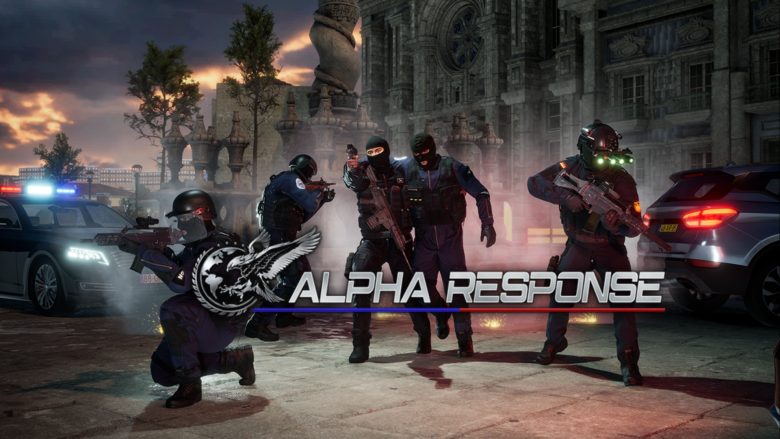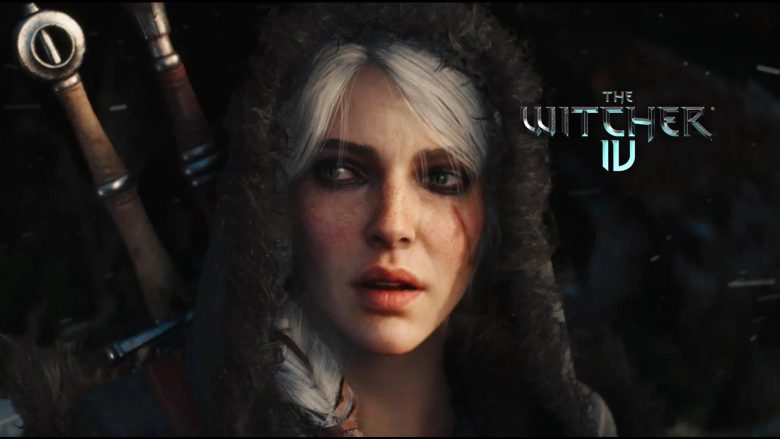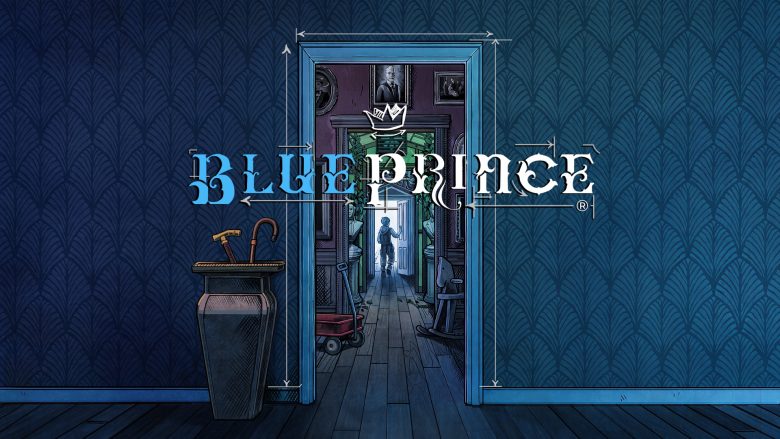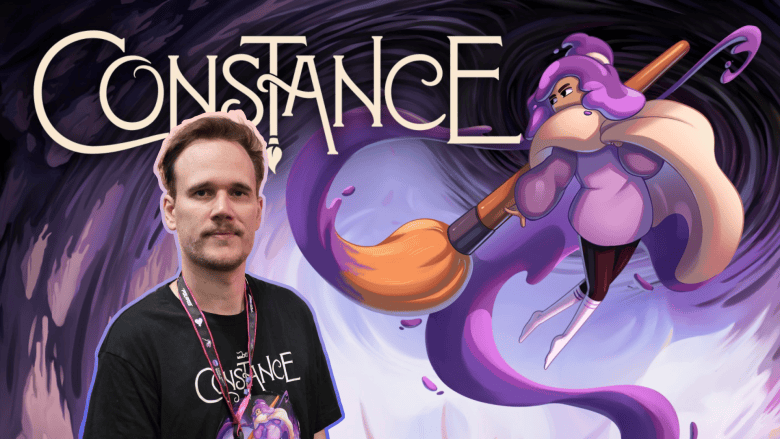An Exclusive Deep Dive into Nekki’s Vision.

Welcome back to a new in-depth feature dedicated to SPINE – This is Gun Fu, the highly anticipated single-player, third-person cyberpunk action game from Nekki, the Limassol-based studio renowned for the acclaimed Shadow Fight and Vector franchises.
This special feature offers a unique opportunity to explore the very essence of SPINE through the insights of Game Director Dmitry Pimenov, who leads us on an in-depth journey into the heart of the game. Through his perspective, we unravel its most intricate layers—diving into the rebellious nature of its protagonist, Redline, and her combat implant, SPINE; the narrative depth interwoven into the game’s structure; the visionary artistry of its creators; and the richly detailed, multifaceted world they are meticulously crafting.
Given the thematic depth and ambitious conceptual framework of SPINE, a superficial or oversimplified overview would fail to adequately convey its full scope. To thoroughly encapsulate the range of ideas and topics discussed in our interview, we have structured this feature into two parts. The first section explores the origins of SPINE, shedding light on its inception and the deep connection it shares with Nekki’s creative journey. The second part delves deeper into the game’s artistic vision and design philosophy, unveiling its compelling gameplay mechanics and the expansive, immersive world it aims to bring to life.
So, without further ado, let’s dive straight into the first part of the interview. Enjoy the read.
Welcome to Nekki: A Hub Where Art, Creativity, and Emotion Converge
“At Nekki, we create emotions worth sharing.”
Nestled along the scenic Akrotiri Bay on the southern coast of Cyprus, Nekki is a global video game developer and publisher founded in 2002. For over two decades, the company has not only focused on crafting innovative games but has also cultivated a dynamic creative hub where artistry, emotion, and technology merge in perfect harmony.

Founded by CEO Dmitry Terekhin and headquartered in Limassol, the company’s name, Nekki, is derived from the Japanese word for “enthusiasm,” reflecting the studio’s unwavering commitment to delivering immersive and captivating gaming experiences.
Over the years, Nekki has built a diverse and impressive portfolio spanning multiple platforms, including mobile, PC, and consoles. The studio is best known for its flagship franchises, Vector (2012) and the Shadow Fight series—titles that have been instrumental in solidifying Nekki’s position within the gaming industry. Since the company’s founding in 2002, these games have accumulated over a billion downloads, underscoring the studio’s impact on the global gaming landscape.
Currently, the studio is fully engaged in the development of SPINE, an ambitious single-player, third-person cyberpunk action game that blends gun-fu combat with beat ’em up mechanics. One of the most intriguing aspects of SPINE is its use of Cascadeur, Nekki’s proprietary 3D keyframe animation software. This cutting-edge tool, powered by AI-assisted technology, allows animators to create dynamic poses with remarkable speed, instantly visualize realistic physics, and fine-tune secondary motion—all while maintaining full creative control.
At the helm of this ambitious and cutting-edge project is Dmitry Pimenov, the Game Director of SPINE. Since assuming the role in 2021, Pimenov has been instrumental in shaping the game’s vision, design, and production, ensuring that SPINE aligns with the studio’s core values and creative principles.
Now that the stage is set, let’s waste no more time and dive straight into the interview. Enjoy!
The Interview
Hello Dmitry, welcome, and thank you for joining us today for this special deep dive into SPINE. To begin, we’d like to ask you a question that, while likely familiar and introductory, is key to understanding your journey: Could you share a bit about your background and early experiences in the gaming industry? What initially drew you to this specific artistic path, and what factors ultimately led you to pursue it as a game developer? And, ultimately, what made you confident that this was the right direction for you?
Actually, my journey into game development was a conscious decision. For a long time, I was uncertain about what to do with my life. I dropped out of high school because I realized it wasn’t the right fit for me. Afterward, I spent a couple of years studying theoretical physics, but eventually, I understood that it wasn’t my passion either. I took some time to figure things out, even working briefly in television. I’ve always had a creative drive, so I explored music as well and learned to play the guitar.
Luckily, I had the support of my family, who gave me the freedom to live independently for a year and a half, which helped me figure things out. It was during this time that I realized how much I loved video games, though I never considered the possibility of working in the industry at first. When I began pursuing this path, the industry wasn’t as established as it is now. Back then, there wasn’t as much awareness about the potential to make money from gaming. It was more driven by enthusiasm and passion.
For me, the decision to enter the game industry wasn’t about financial gain—it was about my love for games. There are two things I’ve always been deeply passionate about: art and technology. Gaming, for me, is the perfect fusion of both. It’s a modern form of art, and this art is brought to life through technology.
What really amazed me when I joined the industry was the sheer passion of the people I met. In previous jobs, I often encountered individuals who seemed disconnected from their work, but when I entered the game development world, it was completely different. I found that 98% of the people I worked with were genuinely passionate and deeply involved in what they were doing. That’s when I realized that I had found my place, and I never looked back.
Before we dive further into your artistic and professional journey, and the beating heart of SPINE, we’d like to ask a seemingly simple question—one that, in our view, offers invaluable insight into your relationship with the world of video games. Looking back on your path, who do you think was the driving force behind your journey: was it you, whether consciously or unconsciously, who chose video games as your calling, or do you feel that video games, in a sense, chose you?
That’s a very interesting way to put it—about video games calling to me. However, I believe there are two aspects to consider here. As I mentioned earlier, my passion for video games played a crucial role, but at the same time, the decision to pursue a career in the gaming industry was a conscious one. I wouldn’t have chosen this path if I didn’t truly love video games. In that sense, it’s a dual-faceted decision—my passion for the medium was a driving force, but the choice itself was a well-thought-out one.
While still relatively young, your extensive experience in the gaming industry has clearly equipped you with remarkable skills and expertise. Before we delve into the next chapter of your journey, which brought you to Nekki and your current role as Game Director, we’d like to ask: What do you consider to be the fundamental skills every game developer should possess? Which of these do you find most challenging to master? And, if we may, which skills do you feel you have already mastered, and which ones are still in the process of refinement and perfection?
First, I appreciate the kind words, thank you. I believe I quickly developed as a team leader, and that was due to my focus on a few key areas that I felt were essential for growth. It’s often more challenging to grow in the free-to-play industry, where professionalism is paramount. Fortunately, I had the opportunity to work with a startup-like environment, where the company itself was evolving as I was, and that provided me with unique opportunities to grow. One thing I observed early on is that not many people take responsibility in this industry, and I truly believe that personal responsibility is a critical element in successful game development.
Game development is inherently a creative field, which attracts many talented individuals. However, some can be driven primarily by their artistic vision and struggle to maintain structure or organization. That’s why management skills—though not necessarily managerial in title—are incredibly important. It’s about managing yourself, taking responsibility for your actions, and being accountable to the team.
Of course, these soft skills should be complemented by hard skills that are specific to the role you aspire to in the industry. In my view, game directors often emerge from the ranks of producers or game designers. For game designers, the key is to constantly learn and grow. Inspiration can come from anywhere—whether it’s history, culture, or even something as unexpected as cooking. These diverse interests can spark ideas that make their way into the games we create.
Broadening your perspective is essential. I consider myself naturally curious, which I believe is one of my strengths. You can never stop learning in this field. The specifics of what you need to learn really depend on the type of game you’re working on. For example, in my journey, I’ve spent a lot of time learning about the structure of action games, pacing, and understanding player expectations. It’s fascinating to see how players react to different elements of a game, sometimes in ways you wouldn’t expect. In the end, I would say the two most important qualities are being open-minded and responsible. While hard skills are a must, cultivating these soft skills can really make a difference in the success of a project and a team.
After more than seven years at Banzai Games—specifically, seven years and four months—where you contributed to Shadow Fight 2 as a Game Designer (2013–2014), and later advanced to Senior Game Designer (2014–2015), Lead Game Designer (2015–2017), and ultimately Executive Producer (2017–2021) on Shadow Fight 3, you joined Nekki in 2021. Now, as Game Director and Chief Operating Officer, you’re at the helm of SPINE’s development. Could you walk us through your journey to Nekki and elaborate on how your previous roles have shaped your growth as a game developer? Furthermore, how do the skills and experiences you gained during this time continue to influence your work and the overall direction of SPINE?
Nekki and Banzai Games have enjoyed a long-standing partnership, and within the teams, there’s no real distinction between the roles. Everyone communicates on the same level, with Banzai Games handling development and Nekki overseeing publishing.
During my time at Banzai Games, I was primarily responsible for the production of the Shadow Fight series, particularly Shadow Fight 2, where I served as Senior Game Designer and Team Lead. In this role, my focus was on taking responsibility for the game’s development and learning how to deliver a well-rounded product. I also briefly worked on Vector.

As I transitioned to Shadow Fight 3, I took on the role of Team Leader, eventually evolving into the position of Producer. One of the most important aspects of this evolution was maintaining a “helicopter view” of the project. I felt it was crucial to understand how each element of the game came together, not just focusing on game design, but also paying close attention to how the narrative, artwork, and technical components intersected.
Throughout this process, I came to realize that technical constraints often serve as catalysts for crucial creative decisions. A prime example of this is Shadow Fight 2, where the decision to render characters as silhouettes initially stemmed from a technical limitation. Yet, this limitation evolved into one of the game’s most defining and memorable features, giving it a unique identity that resonated deeply with players.
Recognizing the importance of the producer role within the company, we formalized this position. This shift allowed me to expand my responsibilities, and I ultimately took on the role of overseeing producers. This progression set the stage for my current position at Nekki, where I now serve as the Chief Operating Officer. In this capacity, I manage multiple projects, ensuring they align with both creative and operational goals, while maintaining a delicate balance between innovation and efficiency to deliver impactful results.
Let’s delve into the heart of SPINE by retracing its origins. Initially announced in August 2021, the game was envisioned as a PvP experience set in a dystopian world, with a diverse cast of playable characters divided between two factions: rebels and loyalists to the system. However, in 2023, approximately two years later, the project underwent a complete conceptual overhaul, adopting a new—and, if we may say, more unique and ambitious direction. Could you walk us through the developments of those two years and what inspired this dramatic shift in vision, ultimately reshaping the project’s identity?
When we first began working on SPINE, the concept was developed alongside our work on Shadow Fight Arena. At that time, we were focusing on a PvP fighting game with a lot of expectations surrounding multiplayer experiences. We foresaw a future where games would be cross-platform and service-oriented, which led us to think about creating a new IP centered around Gun Fu and close combat.
However, as we delved deeper into the development process, we encountered several challenges. Initially, we aimed to create a cross-platform experience, starting with consoles and PCs. What we quickly realized was that there were very few publishers equipped to handle this kind of game, which was a significant hurdle. This experience also led us to question whether we had a full grasp of the industry’s direction.

Through this, we gained a clearer understanding of what we excel at—content, animations, and narrative. Shadow Fight has one of the most extensive and engaging storylines among fighting games, and this narrative strength became a cornerstone for us. We also realized that the quality of visuals surpassed what was typical in mobile games, which made us think that establishing a new IP as a story-driven game was the right path forward. Initially, we had prototyped the game as a live service, thinking it was the future, but we came to understand that this approach didn’t align with our strengths.
Ultimately, we decided to reboot the project. The shift in direction also led to a change in technology—we moved from Unity to Unreal Engine, as it offered much better visual capabilities, which was crucial for the kind of experience we wanted to create.
The decision to refocus on a story-driven game rather than a service-oriented model was the most pivotal. We realized that if we truly wanted to make an impact with a new IP, we had to lean into what we do best—creating compelling content. A live ops game, by design, wouldn’t allow us to deliver the narrative depth and meaningful mechanics that we wanted. We would be constrained by the need for constant player engagement and watered-down game mechanics, which we knew wasn’t the right fit for this project.

First, there was Vector, followed by the Shadow Fight saga, and now SPINE. Three distinct IPs, each unique in its own right, yet all bound by a shared commitment to innovation, experimentation, and creativity. With that in mind, what made SPINE the ideal choice as your third IP? What led you to believe that SPINE could be the next big venture, worthy of the same investment and attention as your previous successes? And, on a deeper level, what does this project represent for you?
That’s a great question. At the heart of SPINE lies a deep focus on animations and animation software. We use Cascadeur, which has allowed us to push the boundaries of what can be achieved in animation. One of the core reasons behind developing this game is to showcase the potential of advanced animations, especially in genres where animation plays a key role, such as sports simulation and action games. While we initially explored sports games with Vector, we have been primarily focused on action games, particularly those involving martial arts, weapon combat, knights in heavy armor, and ninjas. However, we also wanted to expand into the world of firearms—moving away from the typical melee weapons and exploring a fresh, dynamic approach.
The decision to incorporate guns was driven by our desire to emphasize the animations happening on screen, and the solution was clear: camera work. The camera is a powerful tool that can highlight every move, making the gameplay feel intense and cinematic. This is where the concept of gun fu came into play, drawing inspiration from films like John Wick and Equilibrium, where the choreography of gunfights is as stylized and fluid as martial arts.
This concept has remained unchanged from the beginning. After establishing the core idea, we focused on refining the gameplay mechanics based on my perspective of the industry today and what kind of game we wanted to create. Personally, for me, this project represents an opportunity to craft a game that prioritizes quality and fun without being swayed by fleeting trends. Right now, players are growing weary of open-world games that stretch over 60 hours, forcing them to find ways to entertain themselves. We wanted to create a compact, engaging game that leaves players wanting more, reminiscent of the games that originally inspired us to enter the industry.
SPINE taps into a sense of nostalgia for many players, evoking memories of classic games like Oni, Mirror’s Edge, and Remember Me. It seems to strike a chord with players who reminisce about the great experiences they had as kids. It’s gratifying to see how the game has resonated with people on this level. Ultimately, our goal is to focus on the idea of Gun Fu, ensuring that every mechanic and animation aligns with this unique vision, creating an experience that feels both fresh and familiar.


One question that truly intrigues us—and lies at the heart of SPINE’s concept—centers on the art of Gun Fu. First coined and popularized by John Woo in his iconic film A Better Tomorrow, this genre has since become a defining hallmark of Hong Kong cinema. In SPINE, Gun Fu takes on a new dimension, promising a groundbreaking and immersive experience. Could you elaborate on why Gun Fu was chosen as a thematic and artistic cornerstone of your creative vision? Furthermore, how do you plan to reinterpret and evolve this concept within the context of your game?
As I mentioned earlier, the concept for SPINE stemmed from our desire to explore the interplay between animation, camera work, and firearms. Beyond the technical side, Gun Fu felt like the perfect genre to push the boundaries of action. Gun fu represents the pinnacle of gunplay in action movies—combining intense, near-exaggerated gunfights with emotional depth. There’s an inherent absurdity in Gun Fu, which is where the fun lies. It’s not your typical, straightforward action film; it’s the kind of movie where a character might light a cigarette with their gun, a little absurd perhaps, but undeniably enjoyable.
One of the reasons we were so drawn to this genre is because, especially within the gaming landscape, it remains underexplored. Gun Fu is still relatively niche in the gaming world, and many people are only familiar with it through films like John Wick. While John Wick is certainly the most prominent example, the genre has much more to offer, especially in the context of video games.
For me, Gun Fu is the most fun and thrilling genre. It’s inherently gamey, if you will. It thrives on the absurdity of its action, the concept of plot armor, and the feeling of overcoming seemingly insurmountable waves of enemies. It’s about a mix of skill, timing, and, at times, sheer luck, all coming together in a high-octane, stylized way that avoids the gritty realism of traditional shooters. It’s not about gore or a hyper-realistic portrayal of violence—it’s about making the action larger-than-life, and that’s where the genre shines.
When we began developing SPINE, we wanted to stay true to the core elements of Gun Fu while adding our own twist. By setting the game in a cyberpunk world, we’re blending two dynamic genres: the adrenaline-fueled, exaggerated action of Gun Fu and the futuristic, dystopian aesthetics of cyberpunk. It’s a combination that feels fresh yet familiar, appealing to fans of both genres.
We believe that while many players might not realize it yet, there’s a growing appetite for Gun Fu in games. The cyberpunk setting only heightens the appeal, tapping into a popular visual and thematic style. Together, these elements create something that feels both unique and exciting for players, and it’s exciting for us to explore this fusion of styles in SPINE.

Stay tuned for the second part of our interview and an exclusive deep dive into SPINE’s gameplay
With this final question—at least for now—our time today comes to an end, along with the first part of our exclusive deep dive into SPINE. We hope this initial glimpse has kept you engaged from start to finish, offering valuable insights, thought-provoking reflections, and a deeper look into Nekki’s ambitious new creation.
But this is just the beginning. The countdown begins to… drum roll …April! That’s when we’ll return with the highly anticipated second and final part of our interview—delving further into SPINE’s gameplay, the creative vision driving its development, and exclusive insights into its design philosophy, once again with Game Director Dmitry Pimenov.
So, mark your calendars and stay tuned to our channels—you won’t want to miss it.
In the meantime, for all the latest updates on SPINE, be sure to visit the game’s official website, follow its dedicated X account, and join the official Discord community.
That’s all for now. Until next time!

